Serving 687 students in grades Prekindergarten-5, Paloma Creek Elementary School ranks in the bottom 50% of all schools in Texas for overall test scores (math proficiency is bottom 50%, and reading proficiency is bottom 50%).
The percentage of students achieving proficiency in math is 19% (which is lower than the Texas state average of 41%). The percentage of students achieving proficiency in reading/language arts is 42% (which is lower than the Texas state average of 51%).
The student:teacher ratio of 15:1 is higher than the Texas state level of 14:1.
Minority enrollment is 80% of the student body (majority Black), which is higher than the Texas state average of 75% (majority Hispanic and Black).
Quick Stats (2025)
- Grades: Prekindergarten-5
- Enrollment: 687 students
- Student:Teacher Ratio: 15:1
- Minority Enrollment: 80%
- Overall Testing Rank: Bottom 50% in TX
- Math Proficiency: 19% (Btm 50%)
- Reading Proficiency: 42% (Btm 50%)
- Science Proficiency: 20-24% (Btm 50%)
- Source: National Center for Education Statistics (NCES), TX Dept. of Education
Top Rankings
Paloma Creek Elementary School ranks among the top 20% of public schools in Texas for:
Category
Attribute
Diversity
School Overview
Paloma Creek Elementary School's student population of 687 students has declined by 14% over five school years.
The teacher population of 46 teachers has declined by 6% over five school years.
Grades Offered
Grades Prekindergarten-5
Total Students
687 students
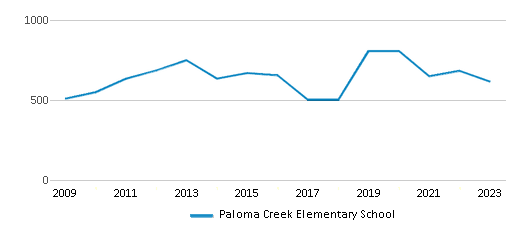
Gender %
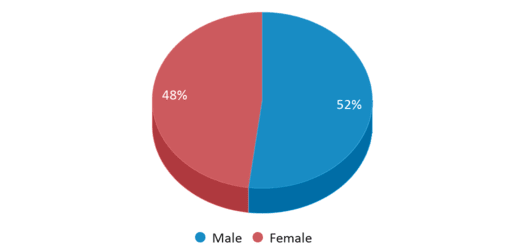
Total Classroom Teachers
46 teachers
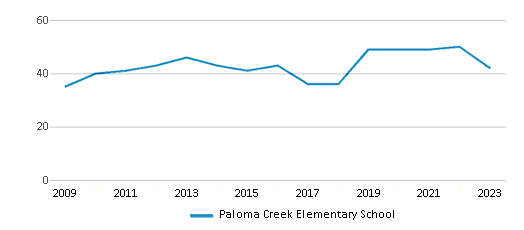
Students by Grade
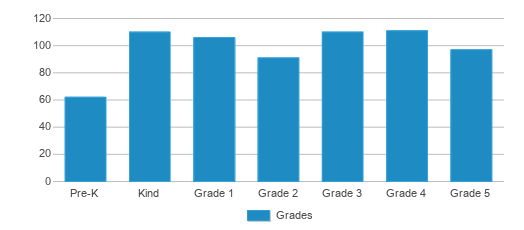
School Rankings
Paloma Creek Elementary School ranks within the bottom 50% of all 8,188 schools in Texas (based off of combined math and reading proficiency testing data).
The diversity score of Paloma Creek Elementary School is 0.73, which is more than the diversity score at state average of 0.64. The school's diversity has stayed relatively flat over five school years.
Overall Testing Rank
#6675 out of 8188 schools
(Bottom 50%)
(Bottom 50%)
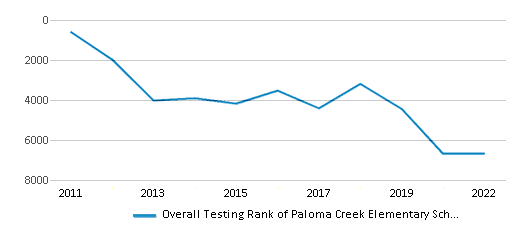
Math Test Scores (% Proficient)
19%
41%
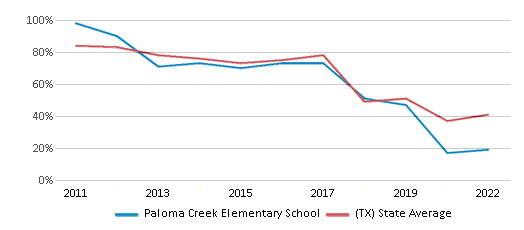
Reading/Language Arts Test Scores (% Proficient)
42%
51%
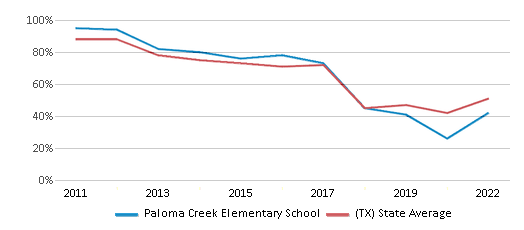
Science Test Scores (% Proficient)
20-24%
46%
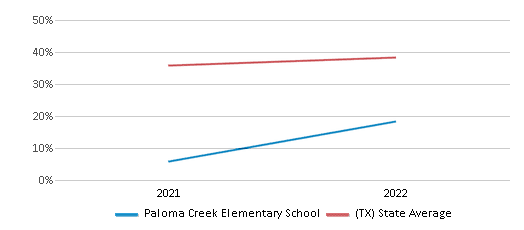
Student : Teacher Ratio
15:1
14:1
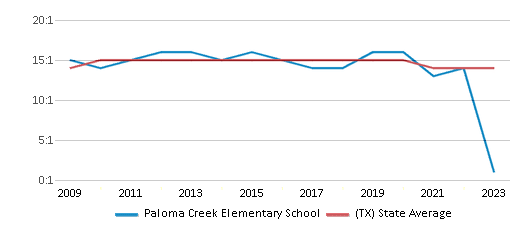
American Indian
n/a
n/a
Asian
10%
6%
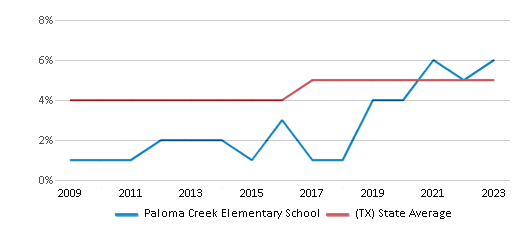
Hispanic
19%
53%
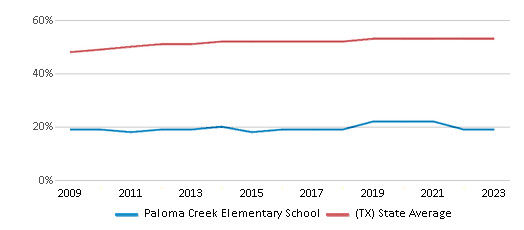
Black
43%
13%

White
20%
25%
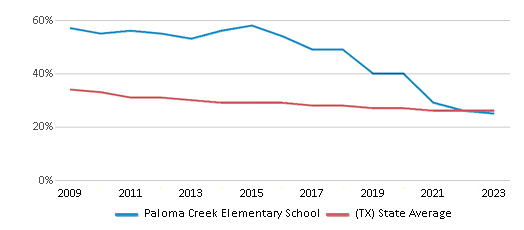
Hawaiian
n/a
n/a
Two or more races
8%
3%
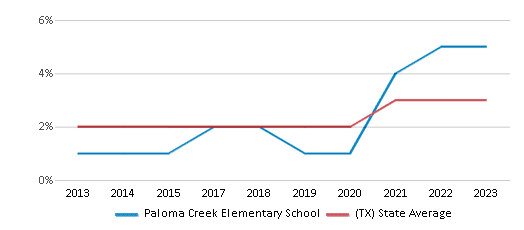
All Ethnic Groups
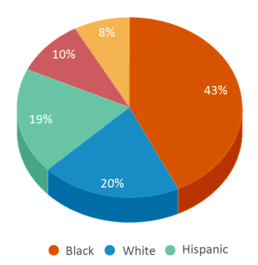
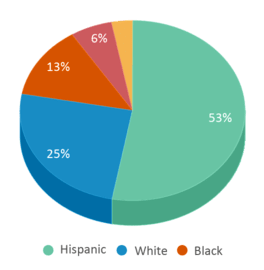
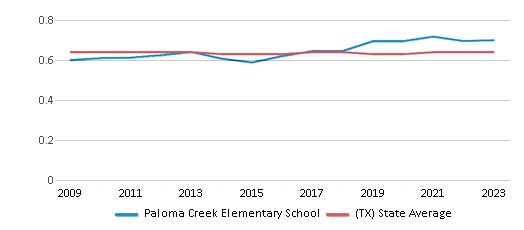
Participates in the National School Lunch Program (NSLP)
Yes
Eligible for Free Lunch
52%
57%
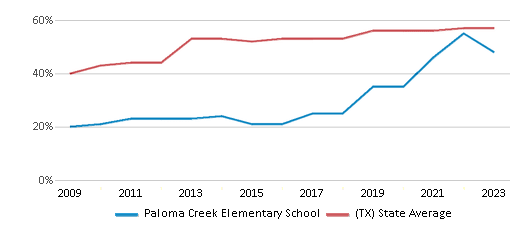
Eligible for Reduced Lunch
7%
5%
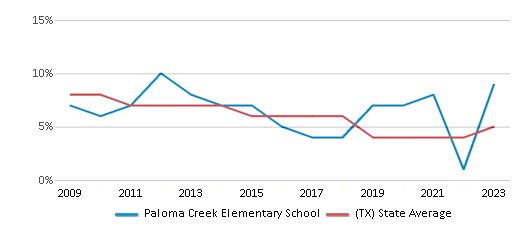
School Statewide Testing
School District Name
Source: National Center for Education Statistics (NCES), TX Dept. of Education
Profile last updated: 02/09/2025
Frequently Asked Questions
What is Paloma Creek Elementary School's ranking?
Paloma Creek Elementary School is ranked #6675 out of 8,188 schools, which ranks it among the bottom 50% of public schools in Texas.
What schools are Paloma Creek Elementary School often compared to?
Paloma Creek Elementary Schoolis often viewed alongside schools like Lakeview Elementary School, Cesar Chavez Elementary School, Savannah Elementary School by visitors of our site.
What percent of students have achieved state testing proficiency in math and reading?
19% of students have achieved math proficiency (compared to the 41% TX state average), while 42% of students have achieved reading proficiency (compared to the 51% TX state average).
How many students attend Paloma Creek Elementary School?
687 students attend Paloma Creek Elementary School.
What is the racial composition of the student body?
43% of Paloma Creek Elementary School students are Black, 20% of students are White, 19% of students are Hispanic, 10% of students are Asian, and 8% of students are Two or more races.
What is the student:teacher ratio of Paloma Creek Elementary School?
Paloma Creek Elementary School has a student ration of 15:1, which is higher than the Texas state average of 14:1.
What grades does Paloma Creek Elementary School offer ?
Paloma Creek Elementary School offers enrollment in grades Prekindergarten-5
What school district is Paloma Creek Elementary School part of?
Paloma Creek Elementary School is part of Denton Independent School District.
In what neighborhood is Paloma Creek Elementary School located?
Paloma Creek Elementary School is located in the Paloma Creek neighborhood of Aubrey, TX. There are 2 other public schools located in Paloma Creek.
School Reviews
2 3/31/2022
My daughter has been at Paloma Creek Elementary for 3 years. I cannot say enough good things about Principal Mead and Vice-Principal Hawkins. They both are very passionate. You can just feel the love they have for their students. I also really appreciate the teachers and the rest of the staff. Especially, her 2nd-grade teacher. My daughter struggled with reading and writing. Her 2nd-grade teacher instilled a love for reading and now she's reading chapter books. I am truly grateful for her teacher.
Review Paloma Creek Elementary School. Reviews should be a few sentences in length. Please include any comments on:
- Quality of academic programs, teachers, and facilities
- Availability of music, art, sports and other extracurricular activities
Recent Articles

What Is A Charter School?
Explore the world of charter schools in this comprehensive guide. Learn about their history, how they operate, and the pros and cons of this educational innovation. Discover key facts about charter schools, including admission policies, demographics, and funding, as well as what to look for when considering a charter school for your child.

10 Reasons Why High School Sports Benefit Students
Discover the 10 compelling reasons why high school sports are beneficial for students. This comprehensive article explores how athletics enhance academic performance, foster personal growth, and develop crucial life skills. From improved fitness and time management to leadership development and community representation, learn why participating in high school sports can be a game-changer for students' overall success and well-being.

February 05, 2025
Understanding the U.S. Department of Education: Structure, Impact, and EvolutionWe explore how the Department of Education shapes American education, from its cabinet-level leadership to its impact on millions of students, written for general audiences seeking clarity on this vital institution.







